
How to make the preservation of the swimming pool for the winter with your own hands? Baths, saunas and pools
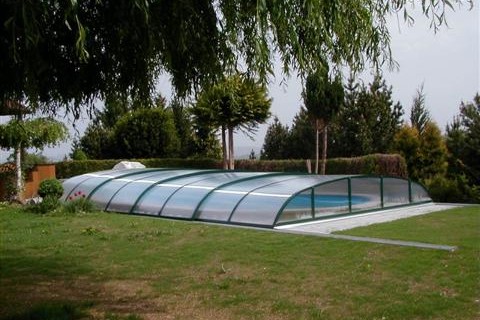
The pools have become an integral part of the country house of many people. These at the same time comfortable and beautiful structures please their owners in the hot season. But with the arrival of cold weather, all open pools are sent to wintering. However, preparation for it is different depending on the type of construction.
Content
Preservation of basins of various types
Small inflatable Summer Rubber Pools
- Well wash the pool.
- Fit a bit to weaken the load on the walls.
- Dry in a ventilated place, hidden from direct sunshine.
- Sprinkle with Talc.
- Fold and hide in a bag that is usually sold complete with a swimming pool.

Large inflatable pools with iron backups, stepladder, pump and cartridge filter
Such models are not equipped with a water fence device, i.e. The trash from the surface is not deleted in a timely manner, but settles on the day. So you need to start with cleaning bottom. Here the conservation is a little harder:
- Rinse the filter in reverse flushing mode.
- Now - in seal mode.
- Switch to normal operating mode.
- Disassemble the design and hide for storage until the next season.
Frame (team) Pools
- Seasonal. Caring for such a pool is no different from the care of large rubber. The difference is in the number of dismantled components. All fittings, pipes, valves, etc. are removed, washed and dried. The remaining non-removable elements are cleaned of clogging and moisture residues and closed with plugs. Then the artificial reservoir is carefully covered with protective coating and ready for winter.

- Frost-resistant.Some models of such pools are knocked into the ground. These structures remaining wintering in an unemployed form consist of such parts:
- Frame.
- Bowl of PVC film (0.3-0.8 mm) with a term of operation of 1-2 seasons, which requires periodic replacement.
- The filtering system based on a sand filter with a pump and water intake device (skimmer).
- Set of fittings and hoses.
- Ladder.
Preservation of such a design is similar to the preservation of stationary pools. 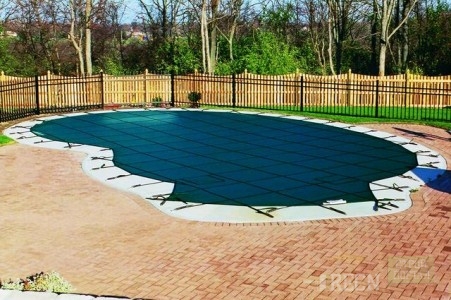
Stationary pools
Oddly enough, with the conservation of the pool for the winter, water inside it should remain. She, turning into ice, plays the role of a kind of "shock absorber" when changing volumes, then a freezing, then thawing soil. Such sharp and frequent oscillations may entail damage to the pool bowl. Therefore, conservation activities are desirable to spend before the first cold at temperatures below 15 ° C. 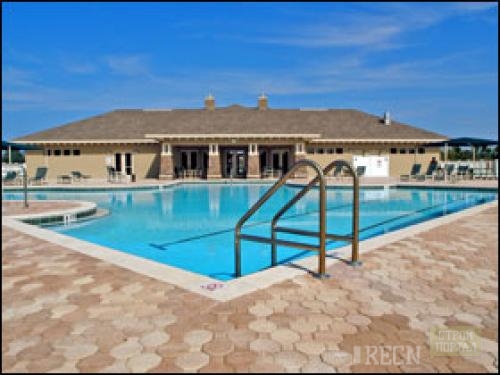
The main rules for the preservation of stationary pools:
- Bring to normal PN-level values \u200b\u200b(7.2-7.6) and enter CL in granules or pills according to the instruction manual for the basin.
- Clean the bottom and walls of the pool using a special bottom vacuum cleaner.
- Clean the pool filter by turning it in the backwash mode.
- Switch the filter to seal mode and set 10-15 seconds.
- Turn the filter to filter mode.
- Enter the preparation for preservation, guaranteeing water purity (in the absence of frosts). It prevents reproduction and sedimentation of algae, yals and lime deposits and simplifies the cleaning of the inner surfaces of the basin after wintering.
- Filter water for 2-3 hours.
- Drain some water so that its surface falls 10 cm below the edge of the skimmer and the return nozzle.
- Remove and remove all the components of the hydraulic system - the filtering unit, the countercurrent device, the heating system, and the like. When dismantling the filtration unit, deraid the filter, drain the water through the crane, open the lid and shift the filtrate to another vessel. After that, rinse the filter carefully. Switch the valve into emptying mode and drain the residues of the liquid. Now you can hide the filter to the storage place.
- Those parts of the hydraulic system that are not dismantled, free from water.
- Free ends of plots Close the plugs. Install the foam plugs in the deepening lighting devices, skimmer and in the nozzles that remained above the water.
- Lighting wires place along the sides of the pool and secure.
- Place compensators in the water to reduce the effect of ice on the pool bowl in the winter. These are such items that can be compressed with an increase in external pressure (plastic canisters, five-liter water tanks, half-filled with sand, automotive tires and slices of foam). Light compensators take it with small sandbags with sand so that they, hiding under water, were still in the upper thickness of the water. For example, in the center of the pool, it is touched by the canisters and evenly position the five-point meter bruks of the foam at a distance of 10 cm from the edge. Do not use metal products for this purpose! Also do not use the wire for tied cargo, it is better to take a synthetic cord. Metal can leave traces of rust on the surface of the pool. To distribute compensators all over the basin evenly, it is desirable to tie "garland" and strengthen it on board.
- Cover the aqueous mirror. The ideal option is all-season covers that in the summer protect the pool from pollution during idleness, and in winter they become a means of conservation. If the coating, according to the instructions, is designed for use exclusively in winter, it must have certain strength characteristics to withstand the severity of the snow masses. Do not use for covering the basin of wood and metal structures laid on the side of the pool. Solving how to store a swimming pool in winter, you should strive to reduce the loads on the bowl and the body of the structure.
- Start reconser us only after the ice inside the pool melts itself.
That's all! Your reservoir is ready for wintering, and you can safely go to the city, not experiencing about the storage of the pool.
Types of coating
- Awning coatings (Tarpaulin, polyvinyl chloride film, etc.) . These coatings are capable of completely protecting the watertime from the atmospheric influence and contamination.
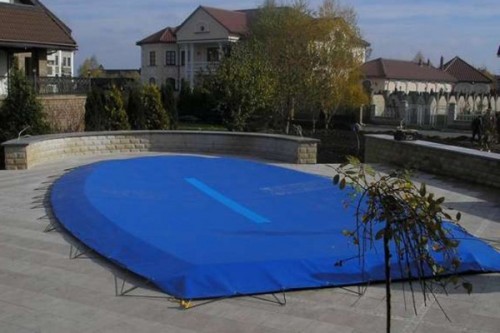
- Heat insulating bubble beds. Regarding inexpensive (and, apparently, therefore popular) coatings accumulating the energy of the Sun. Visually is the same film for packaging fragile products. Raw materials. From which such beds are made, it has excellent strength and thermal insulation properties.
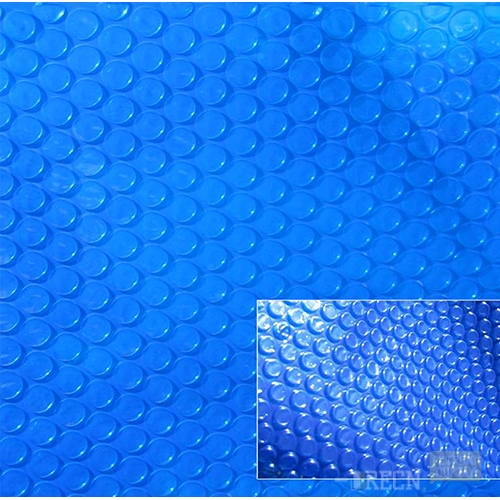
- Rolling. Automatic and thermal insulation rolets allow water heating costs up to 70% and extend the swimming season. An important is the ability of such a coating to protect children and pets from random fall into the water. The material from which these blinds are made, racks to temperature effects and quite aesthetic. The main function of this coating is protective.
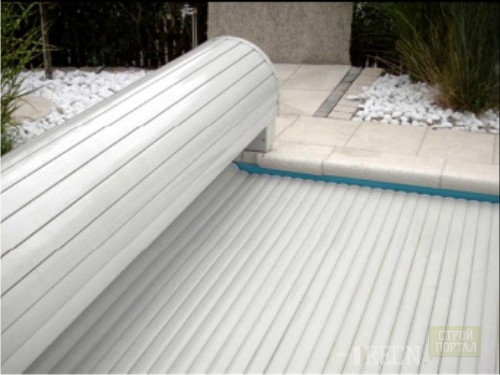
- Plastic pavilions Folded from aluminum rounded shape profiles and polycarbonate coating. This material does not crumble, does not crack, shockproof, has low heat-conducting properties, i.e. Does not produce heat from the pool.
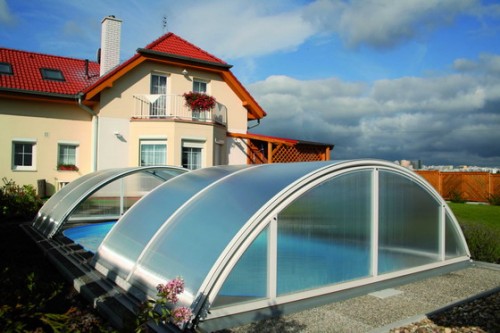
By the way, the cold season, water in the pool will not freeze if using an electric heating installation. In this case, you can not even turn off the water recycling system, and use it at a temperature of 2-4 ° C. Such actions, especially effective if the outdoor pool in winter has a reliable coating, since in this case the electricity consumption is very small.


















